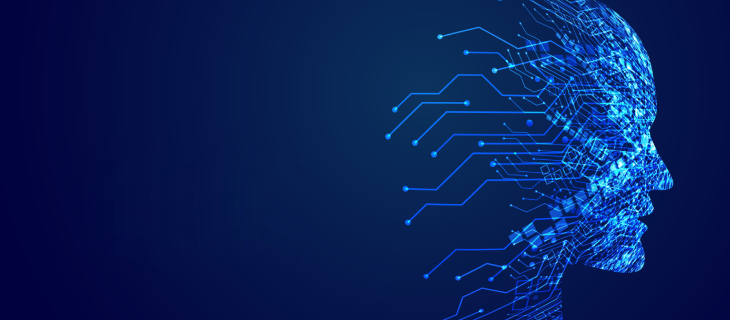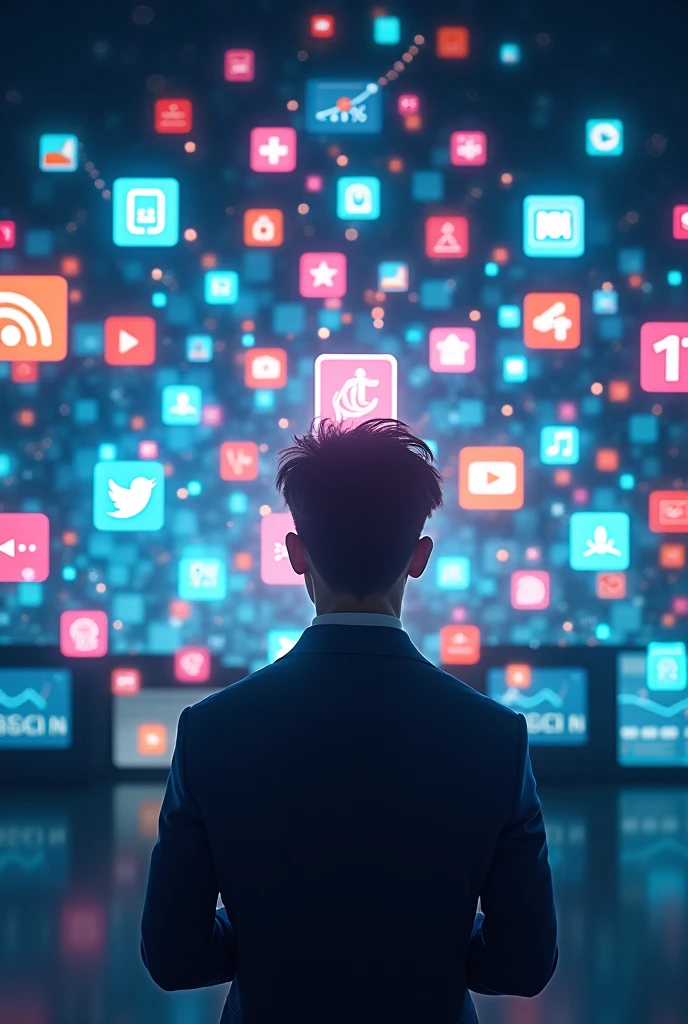The social media advertising battlefield is fierce. With user attention spans shrinking and ad fatigue rising, the pressure to deliver visually compelling content at scale is greater than ever. But consistently producing professional-grade creatives isn’t just time-consuming — it’s expensive.
Enter text-to-visual AI: a breakthrough that allows marketers, creators, agencies, and entrepreneurs to convert simple lines of text into thumb-stopping images, video clips, and motion graphics.
This guide will teach you how to use AI to transform words into visuals that convert. Whether you’re promoting a product, launching a campaign, or just exploring new ad formats — you’ll learn the strategies, tools, templates, and real-world use cases that drive performance.
The Rise of Text-to-Visual AI in Advertising
AI-generated visuals were once experimental novelties — now they’re mission-critical. Thanks to massive strides in generative AI, tools like DALL·E, Midjourney, Firefly, Runway, and Sora allow anyone to become a digital art director with just a few keystrokes.
Key Drivers Behind This Rise:
- Speed: Generate multiple design variants in seconds.
- Cost-Efficiency: Drastically reduce dependency on stock photos, designers, and photoshoots.
- Creativity On-Demand: AI unlocks bold visual styles that were once costly or technically challenging to execute.
- Personalization at Scale: AI can generate assets tailored for different audience segments in real time.
In fact, a 2024 report from Marketing AI Institute predicts that by 2026, 70% of social media ads will feature AI-assisted creative elements.
Why Visual Creatives Matter in Social Media Ads
Social media is a visual-first experience. Your creative is your first impression, pitch, and call-to-action rolled into one.
Here’s what visual creatives influence directly:
- Scroll Stop Rate: How often people pause when your ad appears.
- Engagement Rate: Likes, comments, shares — the emotional resonance of your visual.
- Click-Through Rate (CTR): How well the creative drives users to take action.
- Conversion Rate: How convincingly it communicates the value of your offer.
🧠 Psychological Insight: Humans process visual information 60,000x faster than text. That’s why ads with vivid imagery, human faces, or dynamic motion can instantly connect with viewers on a subconscious level.
Core Principles of a High-Converting Social Media Ad
Before jumping into AI tools, you need a strong creative foundation. Even the best technology won’t save an ad that lacks clarity, emotional pull, or strategic structure.
a. Clarity of Message
What is the core value proposition in 5–7 words?
🧪 Tip: Use the “Grunt Test” — If a stranger saw your ad for 2 seconds and grunted, could they still understand what it’s about?
b. Visual Hierarchy
Your visuals should guide the viewer’s eye. Use size, contrast, and positioning to emphasize the most important message.
c. Emotion & Relevance
Great creatives connect emotionally. Use imagery that speaks to aspiration, identity, or fear of missing out (FOMO).
d. Brand Consistency
Even AI-generated content should reflect your brand’s colors, tone, and typography. Use AI editing tools to fine-tune outputs accordingly.
e. Channel Fit
A perfect ad for TikTok may flop on LinkedIn. Match your format, tone, and aesthetic to each platform.
From Text to Creative: The AI Workflow Explained
Here’s a step-by-step blueprint to go from text idea to fully AI-generated social ad creative:
Step 1: Clarify the Objective
Are you trying to:
- Drive traffic?
- Generate leads?
- Boost app installs?
- Increase purchases?
Step 2: Summarize the Offer
Your offer is your bait. Make it clear, specific, and urgent.
✅ Example: “Get 40% Off Eco Sneakers. This Week Only!”
Step 3: Translate the Offer into a Prompt
🎯 Prompt Example:
“A realistic product photo of eco-friendly sneakers on a forest trail, earth-toned color palette, bright lighting, overlay text: ‘40% OFF – This Week Only’, modern minimalist design”
🧠 Pro Tip: AI tools respond better when you include design styles (“minimalist”, “realistic”), composition cues (“flat lay”, “lifestyle shot”), and mood words (“vibrant”, “zen”).
Step 4: Choose the Right Tool
| Creative Type | Recommended Tools |
| Images | Midjourney, DALL·E, Firefly |
| Videos | Sora, Runway, Pika |
| Templates + Text | AdCreative.ai, Canva AI |
| Animation | Kaiber, Genmo |
Step 5: Generate Multiple Variations
Run 3–10 versions using slight tweaks in your prompt to test:
- Color schemes
- Angles (top-down, side view)
- Background types (studio, outdoor)
- Emotional tones (playful, dramatic)
Step 6: Edit & Brand
Polish your outputs using:
- Canva for overlays, logos
- Photoshop AI for retouching
- Remove.bg for background cleanup
- Brand kit matching (colors, fonts)
Step 7: Deploy & Test
Upload to your ad platforms (Meta Ads, Google, TikTok, LinkedIn), and launch your A/B tests.
Prompt Engineering for Ad Creatives: Tips, Tactics & Templates
Crafting effective prompts is part art, part science.
📚 Prompt Template Examples by Use Case
🛍 E-Commerce Sale:
“A top-down flat lay of skincare products on a marble counter, soft natural light, pastel color palette, overlay text: ‘25% Off Today Only’, clean and feminine aesthetic”
📱 Mobile App Promotion:
“A close-up of a modern smartphone with a health tracking app, held by an athletic woman in gym wear, text overlay: ‘Track Progress. Download Free.’, high-contrast lighting, energetic vibe”
🎓 Webinar or Event:
“A confident female professional speaking on a video call, desk background with books, text overlay: ‘Free AI Marketing Webinar – Sign Up Now’”
🏖 Travel & Tourism:
“A scenic beach with a couple watching sunset, romantic tone, cinematic color grading, overlay text: ‘Escape the City – Book Now’”
🔥 Advanced Prompt Tips:
- Include camera types (e.g., “shot with a Canon 5D” for realistic styles)
- Use art references: “in the style of Vogue editorial” or “inspired by Pixar animation”
- Mention audience demographic: “Gen Z aesthetic”, “Millennial-friendly design”
- Combine with trending topics: “AI-powered business woman holding smartphone, 2025 trend”
Platform-Specific Strategies: Facebook, Instagram, LinkedIn, TikTok & More
Each platform has its own DNA. Here’s how to tailor AI creatives accordingly:
📘 Facebook / Instagram
- Style: Lifestyle, product-in-use, clean overlays
- CTA: “Shop Now”, “Swipe to Learn More”
- Best Format: 1:1, 4:5 vertical
- Pro Tip: AI-generated UGC (user-generated content) styles outperform polished product renders.
📱 TikTok
- Style: Raw, quirky, fast-moving visuals
- CTA: “Watch till end”, “Don’t miss this!”
- Best Format: 9:16 vertical video or animated slides
- Pro Tip: Use animated AI tools like Runway for meme-style or narrated product showcases.
- Style: Professional, clean, corporate tone
- CTA: “Register Now”, “Learn from Experts”
- Best Format: Landscape, 1:1 carousel
- Pro Tip: Use AI for thought leadership visuals like data visualizations, whitepaper teasers.
- Style: Aspirational, cozy, curated scenes
- CTA: “Explore Looks”, “DIY This”
- Best Format: 2:3 portrait
- Pro Tip: Focus on mood boards and tutorials created via AI for lifestyle brands.
Testing, Learning & Optimizing AI-Generated Ads
AI is fast — but data makes it smarter.
🧪 Test Variables:
- Style: Flat lay vs lifestyle
- Copy: “Save 50%” vs “Buy 1 Get 1”
- CTA: “Learn More” vs “Limited Time Offer”
- Format: Static vs Animated
📊 Key Metrics to Monitor:
- CTR (Click-Through Rate)
- CPC (Cost per Click)
- CPA (Cost per Action)
- ROAS (Return on Ad Spend)
🔁 Iterate Based on Data:
If a visual with “pastel aesthetic” outperforms a “dark minimal” version, adjust future prompts accordingly. Treat each ad as a data-gathering asset.
Case Studies: Brands Winning with AI Visuals
🌿 GreenThreads Apparel
- Objective: Promote sustainable clothing on Instagram
- Strategy: Used Midjourney to create earthy, nature-themed product images
- Result: CTR increased 62%, production time reduced by 80%
🏋️ FitMate App
- Objective: Lower install costs on Facebook ads
- Strategy: Created AI visuals showing app screens in lifestyle settings
- Result: Cost-per-install dropped from $1.20 to $0.55
💼 NovaCreative Agency
- Strategy: A/B tested 50+ AI-generated creatives across 3 client campaigns
- Insight: UGC-style AI images consistently outperformed polished renders by 2x in CTR
Ethical, Legal & Brand-Safety Considerations
As you scale AI creatives, remember:
- Don’t mislead: Use realistic imagery that accurately reflects your product
- Avoid IP conflicts: Don’t prompt AI to imitate copyrighted brands or celebrities
- Disclose AI use: Especially in sensitive sectors like healthcare, politics, or finance
- Stay human-led: Use AI to enhance — not replace — human creativity and oversight
The Future of AI in Creative Advertising
We’re heading toward:
- Hyper-Personalized Visuals: Creatives generated in real-time based on user interests or actions
- AI + Automation: Fully automated campaigns with AI optimizing creative + audience + bidding
- 3D & Interactive Content: AI-generated immersive ads for AR/VR environments
Brands that embrace AI now will gain a massive creative agility advantage over the next 3–5 years.
Conclusion
AI-generated visuals aren’t just efficient — they’re a new frontier in ad creativity. With the right prompts, platforms, and testing strategy, you can generate social ad creatives that are bold, engaging, and tailored to your audience — all at lightning speed.
Remember: The best AI ads don’t feel like they were made by AI — they feel like they were made by a visionary.








